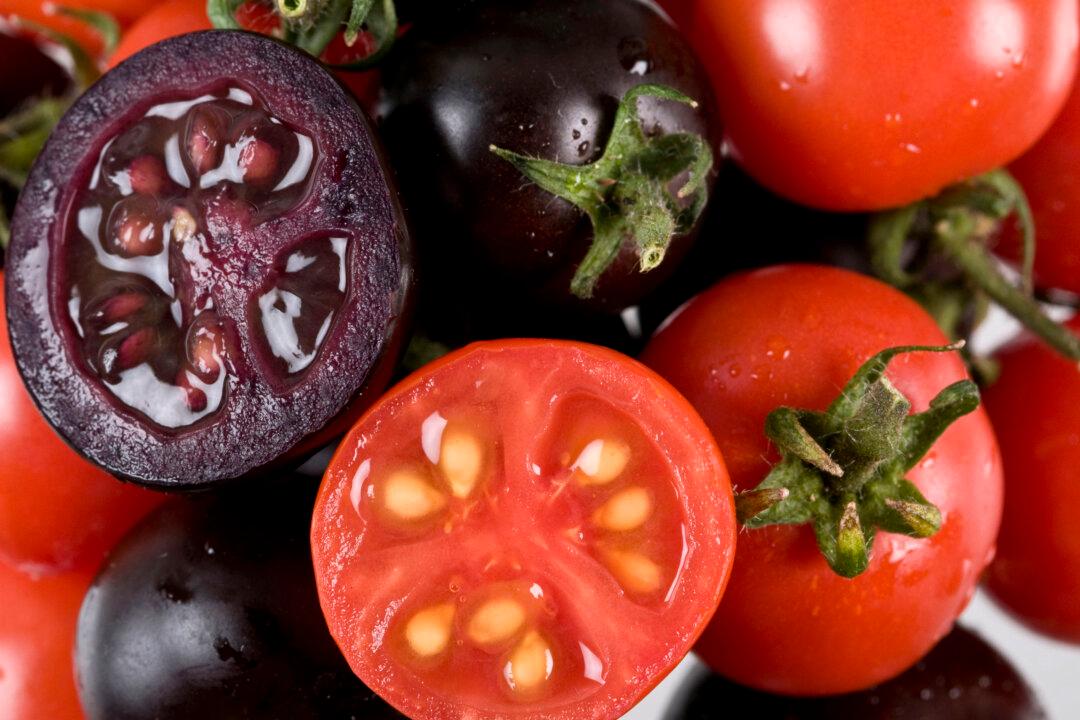A new tomato, genetically engineered to produce very high levels of the cancer-fighting antioxidant “anthocyanins”, which as a result have turned the usually red fruit into a deep purple, is set to be released in markets this year.
Anthocyanins—also found in berries—are thought to offer protection against cardiovascular disease and age-related degenerative diseases as well.





